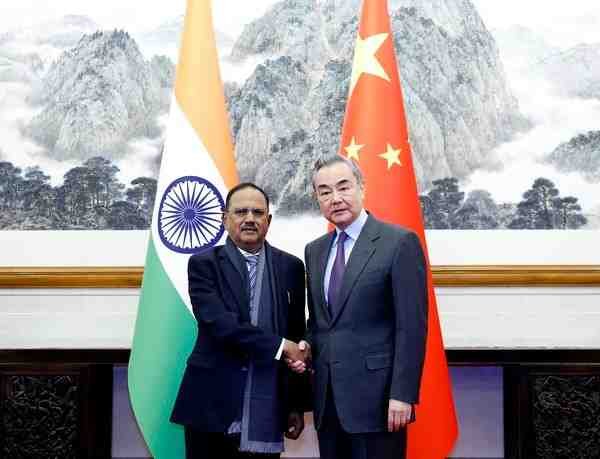Significant Breakthrough in India-China Border Talks
In a major diplomatic development, India and China have decided to begin a structured delimitation exercise as part of efforts to achieve a permanent settlement of their long-standing boundary dispute. National Security Advisor (NSA) Ajit Doval and Chinese Foreign Minister Wang Yi reached this agreement during the 24th round of Special Representative talks in New Delhi on Tuesday. Both sides emphasized that the initiative would mark a forward step towards normalization of bilateral relations, strained since the 2020 Ladakh standoff.
The decision reflects a willingness from both nations to approach the issue in a pragmatic and incremental manner. Instead of attempting an overarching resolution, the two countries will follow a “piece-meal” approach, starting with less contentious parts of the border. Officials described this as an “early harvest strategy” designed to build confidence and reduce tensions.
Four-Stage Process for Border Demarcation
India and China have outlined a multi-step plan for the boundary resolution. First, a technical expert group will be formed under the Working Mechanism for Consultation and Coordination on India-China Border Affairs (WMCC), headed by a senior Ministry of External Affairs (MEA) joint secretary. This group will assess specific areas along the Line of Actual Control (LAC) where both sides face minimal friction.
The second step will involve identification of land tracts that can be marked without triggering disputes. Third, these identified tracts will undergo delimitation, and finally, physical demarcation will follow with the placement of boundary pillars to mark the international border. This systematic method is aimed at delivering tangible progress on the ground while ensuring that contentious areas can be taken up gradually.
Focus on East Ladakh and Non-Offensive Posture
The talks also covered the Eastern Ladakh sector, where tensions have simmered since the May 2020 clashes. Although certain contested zones remain unresolved, both nations agreed to push ahead with disengagement and to adopt a “non-offensive posture” in sensitive regions.
This arrangement will involve pulling back tanks, rockets, and artillery from forward positions along the LAC. The objective is to remove immediate military threats and allow both armies to operate from a position of mutual sensitivity. Analysts note that geographical advantages differ on each side: while India relies on its mountain passes and rugged terrain in Ladakh, China benefits from the relatively flat Tibetan plateau, enabling faster troop movements. The new posture aims to neutralize such asymmetries by lowering the risk of sudden escalations.
Return to Pre-2020 Normalcy
Another highlight of the discussions was the mutual agreement to work toward restoring ties to the level of April 2020, prior to the Galwan Valley incident. Officials indicated that both governments are eager to de-escalate tensions and resume normal exchanges across multiple areas, including trade, investment, and regional cooperation.
The breakthrough builds on the October 23, 2024 meeting between Prime Minister Narendra Modi and President Xi Jinping, where both leaders signaled intent to stabilize relations. The upcoming Shanghai Cooperation Organisation (SCO) summit in Tianjin on August 31 is expected to provide further momentum as Modi and Xi meet again.
Broader Geopolitical Considerations
While India remains wary of China’s deepening ties with Pakistan and expanding footprint in South Asia, New Delhi recognizes the need for practical engagement with Beijing. The new border resolution process is seen as a way to insulate bilateral ties from prolonged confrontation.
Experts say that if both sides can successfully manage early delimitation and demarcation, it would represent the most substantial step forward on the boundary issue in decades. It could also reduce the likelihood of future skirmishes, thereby opening space for greater economic and political cooperation.
Outlook: Confidence-Building Through Incremental Progress
The decision to move toward a phased resolution rather than a sweeping agreement underscores the recognition on both sides that trust must be rebuilt gradually. By tackling less disputed areas first, India and China aim to create a foundation for addressing more contentious zones in the future.
For now, the establishment of the technical expert group and the implementation of a non-offensive military posture represent concrete, confidence-building steps. If sustained, this process could set the stage for one of the most significant diplomatic breakthroughs in Asia, reshaping not only bilateral ties but also the larger regional balance.








